Not only is their colouring valuable at this late season, but the slender foliage of ornamental grasses adds distinctive form to the garden's autumn palette
 Grasses make a wonderful contribution to gardens, providing airy structure and forming delightful contrasts with other plants. Many come to the fore in autumn as their long-lasting flowerheads reach their peak. Here are 10 of the best, all winners of the RHS Award of Garden Merit – which means they are straightforward to grow and widely available to buy.
Grasses make a wonderful contribution to gardens, providing airy structure and forming delightful contrasts with other plants. Many come to the fore in autumn as their long-lasting flowerheads reach their peak. Here are 10 of the best, all winners of the RHS Award of Garden Merit – which means they are straightforward to grow and widely available to buy.
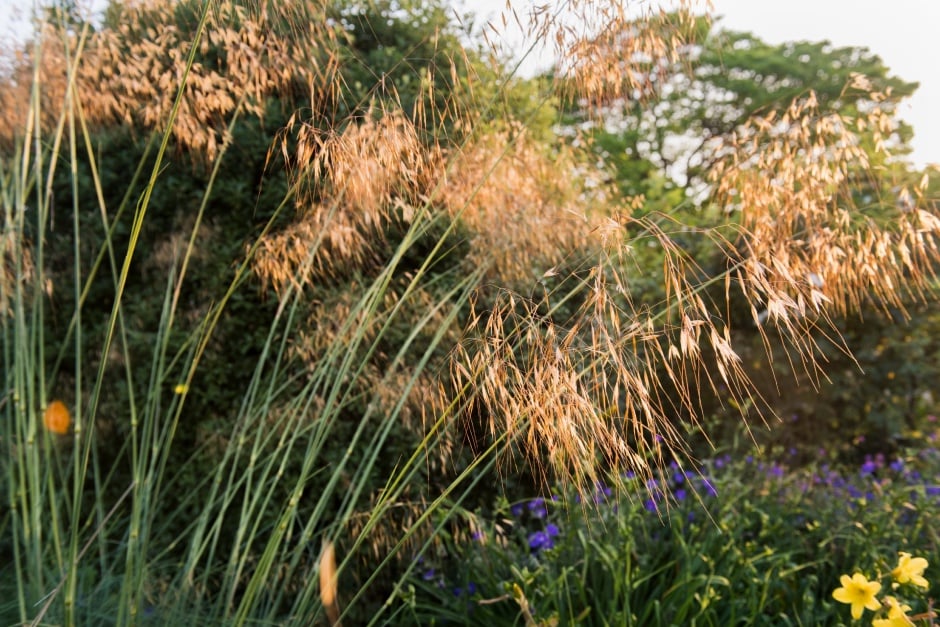 Golden oats
Golden oats
Stipa gigantea is a fine specimen grass but also one of the most valuable see-through plants - it makes its presence felt without blocking the view through to plants behind it. Greyish leaves make impressive evergreen clumps, topped through summer with oat-like flowers that catch the light and shiver in the wind, ripening to pale yellow in autumn. Best in sun, dislikes wet winter soil. 2m.
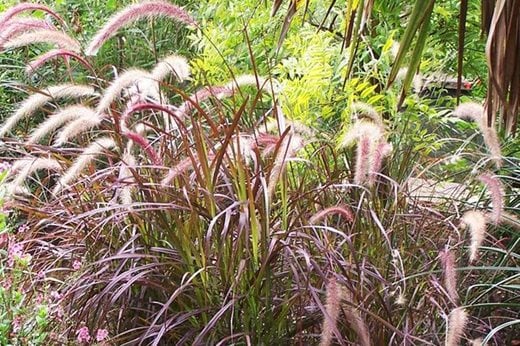 Fountain grass
Fountain grass
Pennisetum × advena ‘Rubrum’ is a frost-tender grass with deep red foliage from planting time in May right through the summer and into autumn. In September and October arching heads of reddish flowers add to the display. Superb in containers with calibrachoas or helichrysum and can be overwintered in a conservatory. 1m.
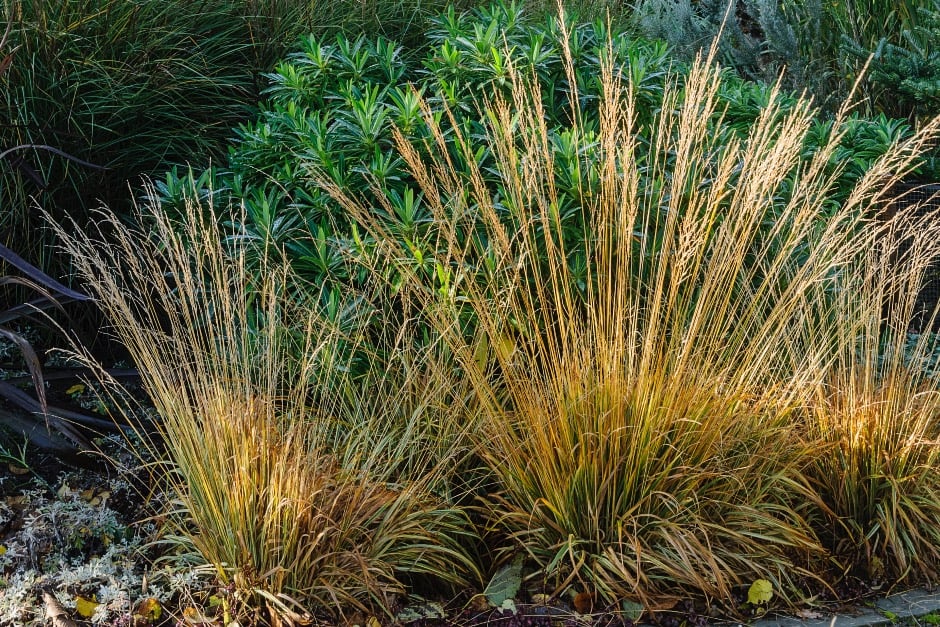 Purple moor grass
Purple moor grass
Molinia caerulea subsp. caerulea ‘Variegata’ - this variegated form of a British native found on moors and fens makes dense clumps of slender foliage. The leaves emerge yellow and mature to green with yellow stripes, becoming reddish in autumn. The flowering stems are also striped, creating an unusually harmonious look. Best in sun and neutral to acid soil that does not dry out. 45cm.
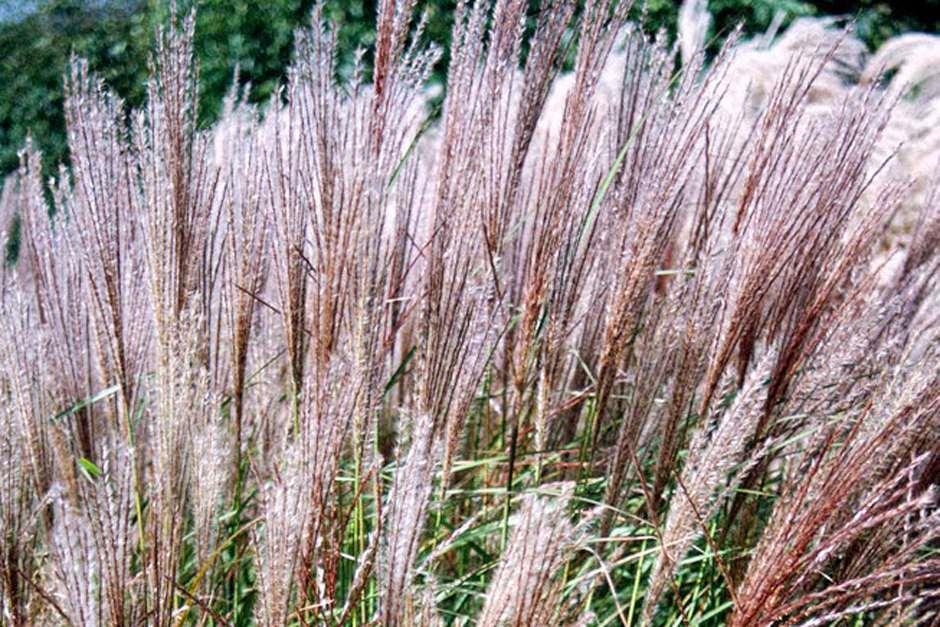 Miscanthus ‘Kleine Silberspinne’
Miscanthus ‘Kleine Silberspinne’
A short miscanthus, the dark green leaves of Miscanthus sinensis ‘Kleine Silberspinne’ turn deep reddish orange and gold, then the mature to straw colour. The rosy pink flowers open in August on unusually bright green, upright stems, then become brown and fluffy as they mature - and the whole plant still looks good in winter. Height 1.2m.
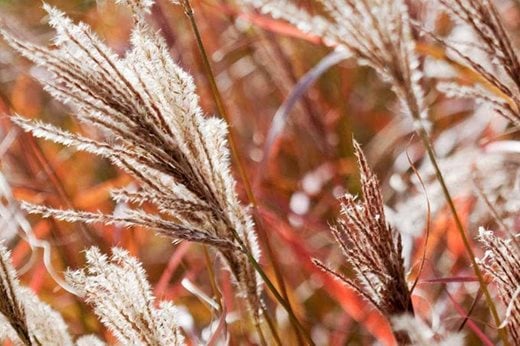 Miscanthus ‘Ferner Osten’
Miscanthus ‘Ferner Osten’
Miscanthus come in a range of foliage and flower colours. The narrow, olive-tinted foliage of ‘Ferner Osten’ has a slim cream midrib and turns bright orange in autumn. The rich red, white tipped flowerheads open in August, then mature through autumn, turning silver and beige. Flowers best in full sun. 1.6m.
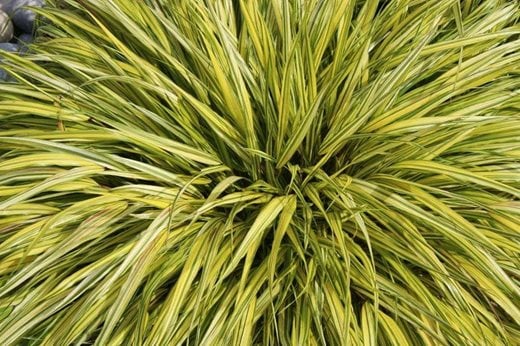 Golden Japanese forest grass
Golden Japanese forest grass
Hakonechloa macra ‘Alboaurea' is a neat but supremely elegant grass featuring a very appealing fountain of yellow-striped foliage for many months. Then in autumn reddish tints appear before the whole plant turns biscuit brown, and the leaves are retained into the winter. A fine specimen for containers, and also in good soil in sun or partial shade. 35cm.
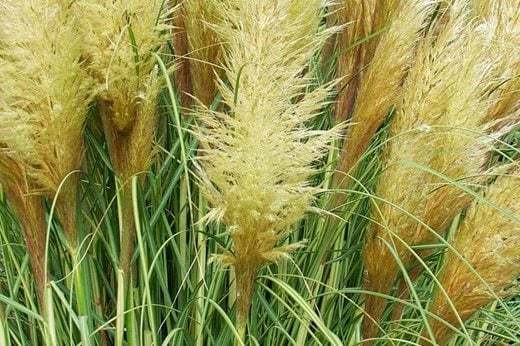 Silver Feather pampas grass
Silver Feather pampas grass
Cortaderia selloana Silver Feather (‘Notcort’) is a pampas grass in a very different style, making a more manageable plant and with each of the leaves striped in silver creating the look of a silvery grey clump. The plumes are noticeably upright, on short stems and open in September, peaking in October. So while its floral impact is at its most impressive in autumn, there is the bonus of all-year variegated foliage. 1.8m.
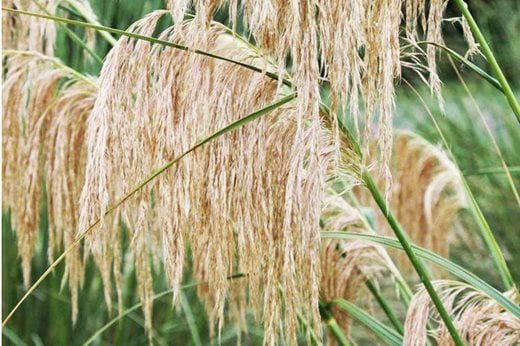 Toetoe, the Kiwi pampas
Toetoe, the Kiwi pampas
There is unexpected variety in pampas grasses, and Cortaderia fulvida from New Zealand is a large and long-flowering species for use as a dramatic specimen. Opening in gold tones in July, as the months pass the arching, one-sided plumes change from pink and creamy white to beige and, unlike those of many other types, the plumes do not fall apart in winter but retain their shape and tawny colour almost till spring. 2.5m.
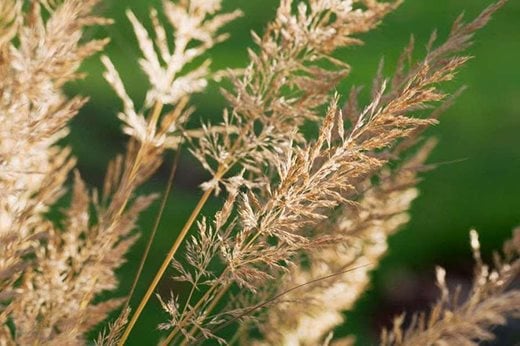 Foxtail grass
Foxtail grass
Calamagrostis brachytricha makes dense clumps of glossy green leaves, with pink-tinted, silvery grey flowerheads in summer and early autumn. These turn biscuit-brown and last well into winter. In autumn the whole clump of arching leaves turns yellow. Best in sun and good soil, cut the whole plant back to 15cm in spring. 1m or more.
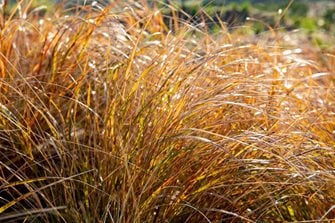 Pheasant-tail grass
Pheasant-tail grass
Sometimes known under its former name of Stipa arundinacea, Anemanthele lessoniana is a lovely clump-forming grass from New Zealand. It features relatively broad green foliage all summer - which in autumn takes on orange, red and yellow tints before toning itself down into warm autumnal browns. Best in rich soil that is well drained, preferably in sun. Lovely airy flowerheads open in late summer. 50cm.

